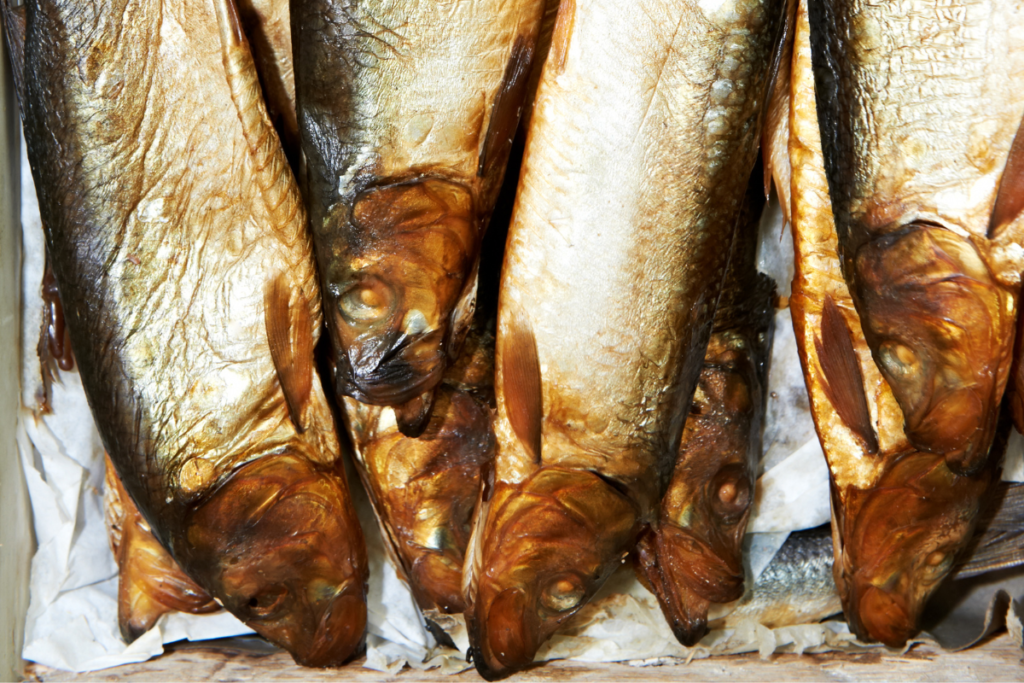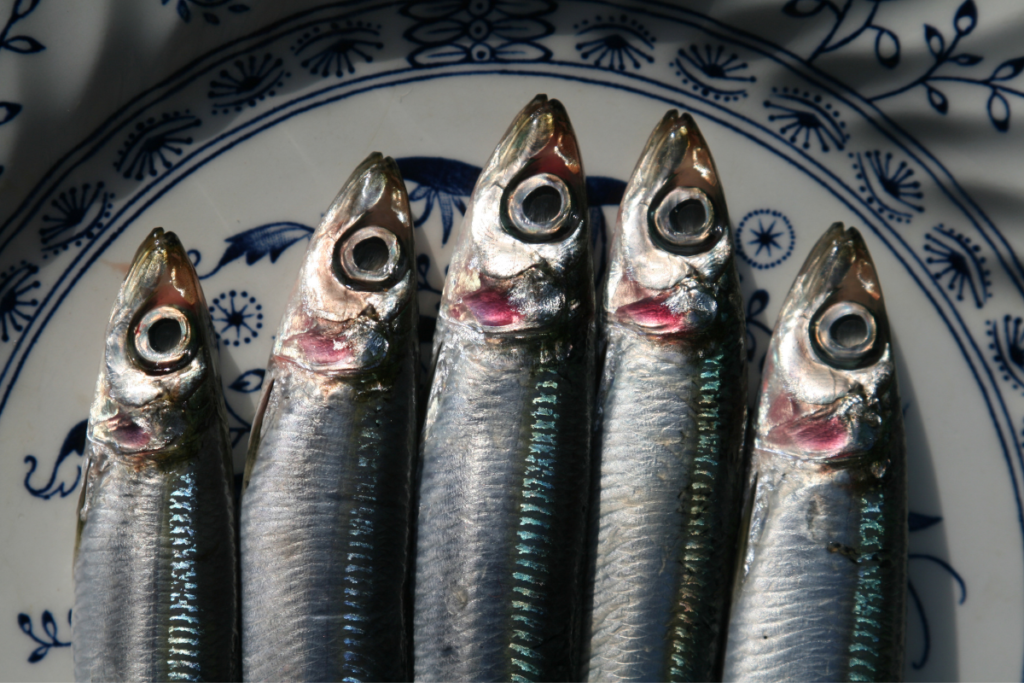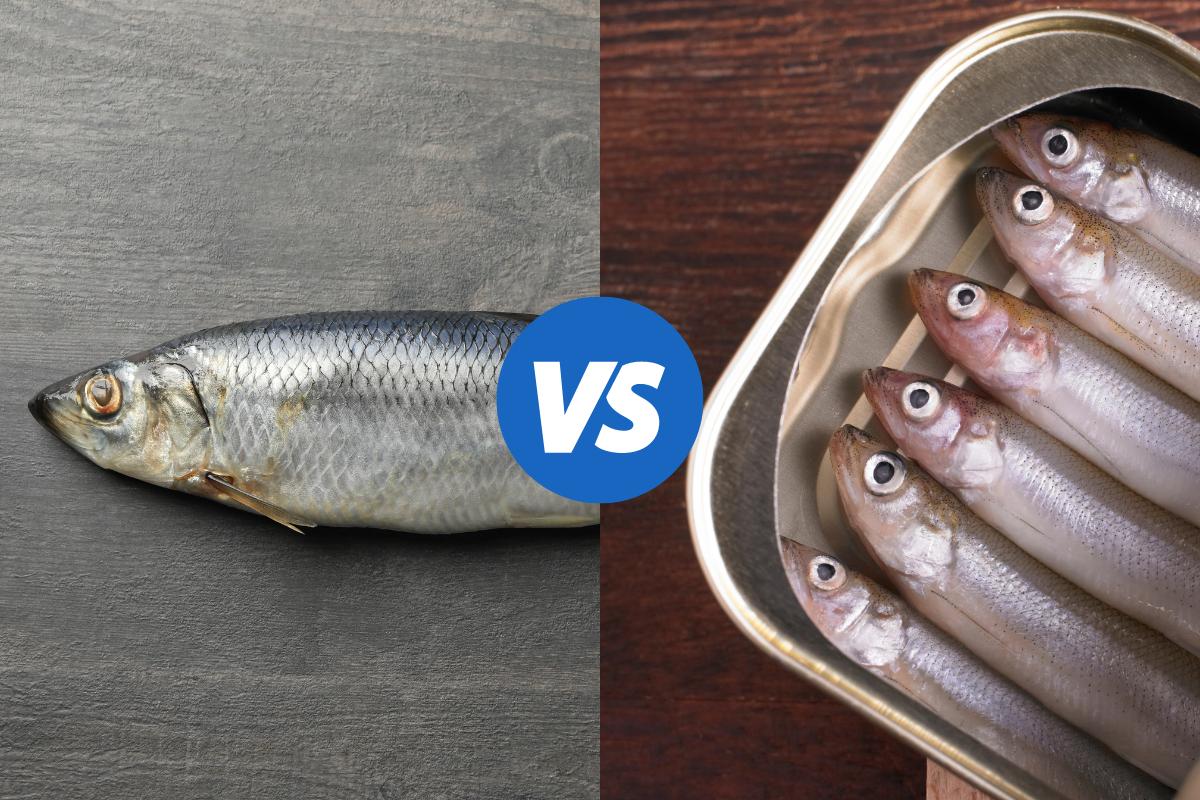Herring and sardines. Some people love them and some people hate them! I’ll have to admit I enjoy a tin of sardines with mustard every once and a while!
Herring and Sardines
Herring and sardines are two types of small, oily fish that are popular in many cuisines around the world. They are both known for their rich flavor, versatility in cooking, and abundance of health benefits. Despite their similarities, there are distinct differences between herring and sardines, including their nutritional content, culinary uses, and even sustainability.
In this article, we’ll delve into these differences to help you better understand these two delicious seafood options and how to incorporate them into your diet.
Whether you’re a seafood aficionado or just curious about trying something new, join us as we explore the world of herring and sardines.
| Feature | Herring | Sardines | Difference |
|---|---|---|---|
| Species | Clupea harengus | Various Sardina species | Diverse group |
| Size | Up to 23.6 inches | Up to 15.6 inches | Herring larger |
| Weight | Up to 2.2 pounds | Up to 4.5 pounds | Varies more in sardines |
| Habitat | Cold, temperate waters | Temperate, coastal waters | Herring wider range |
| Diet | Plankton, small fish | Plankton, small fish, crustaceans | More varied in sardines |
| Flavor | Rich, strong, “fishy” | Mild, savory, often canned | Herring stronger flavor |
| Culinary uses | Pickled, smoked, fresh, grilled | Canned, fresh, grilled, fried | More diverse in herring |
| Availability | Varied by location | Widely available canned, fresh less common | Sardines easier to find |
Nutritional Comparison
Nutritional Values of Herring:
Herring is a nutrient-dense fish, packed with essential vitamins and minerals. A typical serving of herring (about 3.5 ounces or 100 grams) provides approximately:
- Calories: 158
- Protein: 18 grams
- Fat: 9 grams
- Saturated Fat: 2.3 grams
- Omega-3 Fatty Acids: 1.8 grams
- Cholesterol: 86 milligrams
- Sodium: 55 milligrams
- Potassium: 313 milligrams
- Vitamin D: 971 IU (International Units)
- Vitamin B12: 8.4 micrograms
- Iron: 1.1 milligrams
Nutritional Values of Sardines:
Sardines are also nutrient-rich, offering a similar nutritional profile to herring. A 3.5-ounce (100-gram) serving of sardines typically contains:
- Calories: 208
- Protein: 25 grams
- Fat: 11 grams
- Saturated Fat: 2.5 grams
- Omega-3 Fatty Acids: 1.5 grams
- Cholesterol: 142 milligrams
- Sodium: 480 milligrams
- Potassium: 397 milligrams
- Vitamin D: 193 IU
- Vitamin B12: 8.9 micrograms
- Iron: 2.9 milligrams

Health Benefits Herring Vs Sardines
Both herring and sardines are excellent sources of protein and healthy fats, particularly omega-3 fatty acids, which have been linked to numerous health benefits.
These fatty acids are known to support heart health, reduce inflammation, and promote brain function. Additionally, both fish are rich in vitamin D, vitamin B12, and minerals like iron and potassium, which are essential for overall health and well-being.
Cooking with Herring and Sardines
Herring and sardines can be enjoyed in a variety of culinary preparations. They can be grilled, smoked, pickled, or canned, making them versatile ingredients in many dishes.
Herring is often served smoked or pickled, while sardines are commonly enjoyed fresh, canned in oil or water, or grilled with simple seasonings. Both fish pair well with citrus flavors, fresh herbs, and bold spices, making them perfect additions to salads, pasta dishes, sandwiches, and more.
Sustainability of Herring Vs Sardines
When choosing between herring and sardines, it’s essential to consider their sustainability. Both fish are typically abundant and reproduce quickly, making them environmentally friendly choices.
However, it’s essential to check for certifications like Marine Stewardship Council (MSC) certification to ensure that the fish were harvested sustainably. By supporting sustainable fishing practices, you can help protect marine ecosystems and ensure a steady supply of delicious seafood for generations to come.
Taste and Texture of Herring and Sardines
Herring and sardines offer distinct flavors and textures that appeal to different palates. Herring has a rich, oily texture and a bold, savory flavor with a slightly fishy taste.
Its firm flesh holds up well to cooking methods like smoking and pickling, resulting in a robust and flavorful dish. On the other hand, sardines have a milder flavor and a softer texture, making them ideal for grilling or frying.
Their delicate taste pairs well with tangy sauces or citrus marinades, enhancing their natural flavors without overpowering them.

Cooking Methods for Herring Vs Sardines
Both herring and sardines can be prepared using various cooking methods to suit different preferences and culinary styles. Herring can be enjoyed smoked, grilled, baked, or pickled, offering versatility in the kitchen.
Smoked herring is often served as a standalone appetizer or incorporated into salads, sandwiches, or pasta dishes. Pickled herring is a popular ingredient in Scandinavian cuisine, often served with potatoes, onions, and sour cream.
Sardines can be grilled, fried, or baked whole or filleted, providing a delicious and nutritious meal option. Grilled sardines seasoned with herbs and lemon juice make a simple yet flavorful dish, while canned sardines can be used in salads, sandwiches, or pasta sauces for added convenience.
However, both of these fish come in a tin can as well!
Want to learn more about fish? Check out Halibut vs Cod
Conclusion
In conclusion, both herring and sardines are nutritious and delicious seafood options that offer a range of health benefits and culinary possibilities.
Whether you prefer the bold flavor of herring or the milder taste of sardines, incorporating these fish into your diet can provide valuable nutrients and add variety to your meals. With their sustainability and versatility, herring and sardines are excellent choices for health-conscious consumers and seafood enthusiasts alike.
So why not explore the world of herring and sardines today and discover new flavors and culinary adventures?
Which is your favorite herring or sardines? Tell us about it in the comments below!


